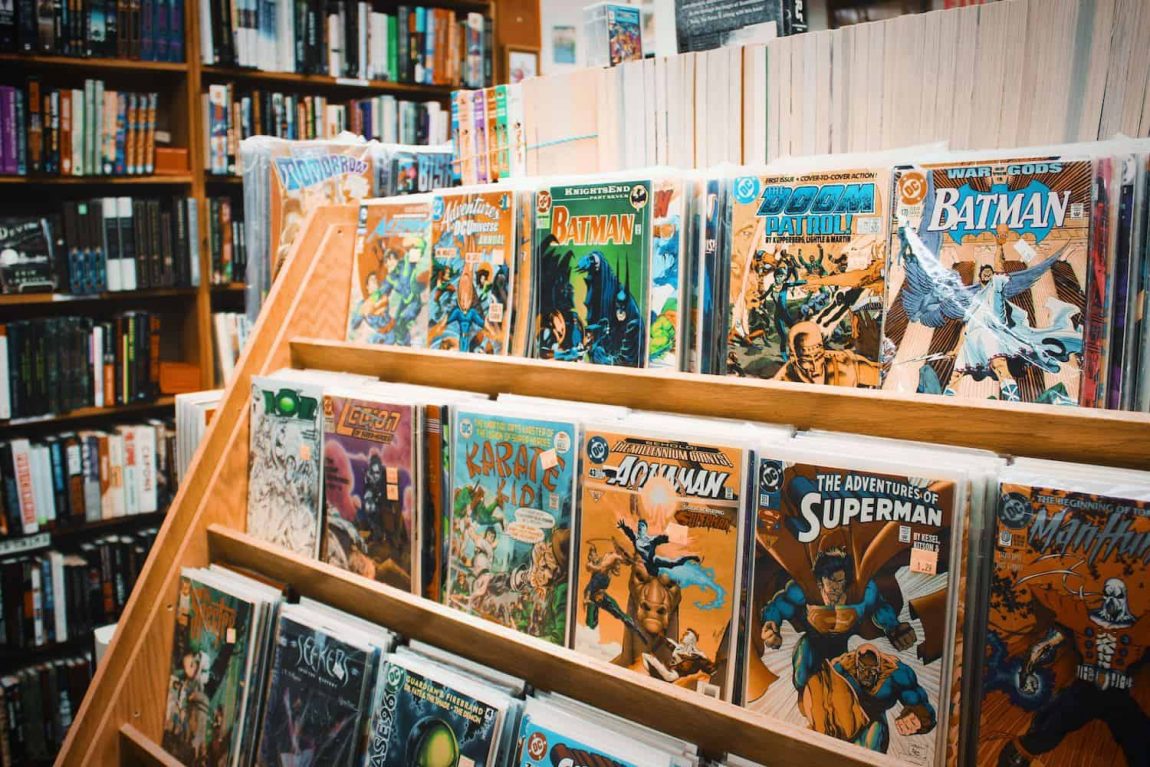Comic Books: A Journey Through Art, History, and Culture
Key Takeaways:
- Comic books, originating as a blend of art and narrative, have evolved into a significant cultural and artistic medium.
- The history of comics spans from early British publications to modern-day digital comics, highlighting diverse global influences.
- American comic books have had a profound impact, with superheroes like Superman and Batman becoming cultural icons.
- The comic book industry has seen substantial growth, with Japan’s manga market leading globally.
- Comic books have been both a reflection and an influence on societal attitudes towards race and ethnicity.
Comic books, a mesmerizing fusion of visual art and storytelling, have significantly shaped popular culture and art. This article delves into the rich tapestry of comic book history, exploring its evolution, cultural impact, and current trends.
The Dawn of Comic Books
Comic books began as collections of humor strips in newspapers. The British comic “Ally Sloper’s Half Holiday” (1884) and “Comic Cuts” were pioneers, followed by the first modern American comic book, “Famous Funnies” (1934). These early comics set the foundation for a new, influential form of storytelling.
Global Footprint of Comics
The comic book industry is not confined to one region but is a global phenomenon. The United States and Japan are significant players, with Japan’s manga market dominating in terms of sales and cultural impact. European countries, notably France and Belgium with their “bandes dessinées”, contribute richly to the diversity of the genre.
The American Comic Book Scene
American comics have profoundly influenced the genre, with characters like Superman (debuting in “Action Comics” #1, 1938) and Batman (introduced in “Detective Comics” #27, 1939) becoming cultural icons. The Golden Age of Comic Books saw the rise of superheroes, while the Silver Age introduced more complex characters and narratives.
Digital Era and Comic Collecting
Digital comics have revolutionized distribution, making comics more accessible. The collecting aspect of comic books remains a passionate hobby, with rare editions like “Action Comics” #1 reaching record-breaking auction prices.
Comics and Societal Impact
Comics have not only mirrored societal views but also influenced them, especially in their portrayal of race and ethnicity. From the stereotypical depictions of the early 20th century to more nuanced representations in recent times, comics reflect the evolving societal attitudes.
Current Trends and Future Directions
The comic book industry continues to evolve, with digital comics gaining popularity and independent publishers contributing innovative narratives. This medium, once seen as children’s entertainment, now caters to a diverse audience, offering a range of genres and themes.
Conclusion
Comic books, transcending their origins as mere entertainment, have become a significant cultural and artistic medium. They offer insights into societal values, push artistic boundaries, and continue to captivate audiences worldwide with their unique blend of art and narrative.
Frequently Asked Questions (FAQs)
- What is the first comic book ever published?
- The first modern-style comic book is considered to be “Famous Funnies,” released in the US in 1934.
- Who are some of the most iconic characters in comic books?
- Superman, Batman, Spider-Man, and Wonder Woman are among the most iconic comic book characters.
- How has the comic book industry impacted popular culture?
- Comic books have significantly influenced popular culture, inspiring movies, TV shows, and a vast range of merchandise.
- What role do digital comics play in the industry?
- Digital comics provide wider accessibility and have revolutionized how people read and interact with comics.
- How has the portrayal of race and ethnicity evolved in comic books?
- Early comic books often featured stereotypical portrayals, but recent decades have seen more diverse and respectful representations.
- What is the difference between a comic book and a graphic novel?
- Comic books are usually serialized and shorter, while graphic novels are longer, more complex narratives published as a single book.
- How does the manga market in Japan compare to the American comic book market?
- The manga market in Japan is larger and more diverse, with a broader audience, compared to the American market, which is heavily superhero-centric.
- What are some rare comic books sought after by collectors?
- Early editions like “Action Comics” #1, “Detective Comics” #27, and rare misprints are highly coveted by collectors.
- How do independent publishers contribute to the comic book industry?
- Independent publishers often introduce innovative, diverse narratives that differ from mainstream superhero themes.
- What future trends are expected in the comic book industry?
- The industry is likely to see continued growth in digital comics, more diverse storytelling, and greater global influence.





